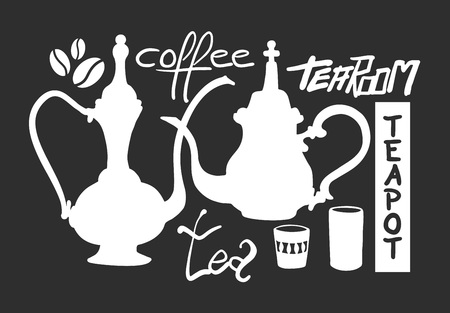Origins of the French Press
The French Press, also known as a press pot or cafetière, has a rich and fascinating history that begins in Europe, specifically within the heart of French coffee culture. The invention of this iconic brewing device dates back to the mid-19th century. While several versions and claims to its creation exist, it is widely believed that the earliest patent for a coffee press was filed in France by Mayer and Delforge in 1852. However, their version lacked a proper seal inside the carafe, making it less efficient than modern iterations.
As coffee culture blossomed across Europe, especially in France and Italy, inventors continued to refine the design. In 1929, Italian designer Attilio Calimani patented a more advanced model featuring a metal mesh filter and plunger system—closely resembling what we recognize today as the French Press. This innovative approach to brewing allowed coffee lovers to steep coarsely ground beans directly in hot water before pressing them down with the plunger, resulting in a robust and aromatic cup.
Year |
Inventor(s) |
Key Innovation |
Country |
|---|---|---|---|
| 1852 | Mayer & Delforge | First patent; basic plunger concept | France |
| 1929 | Attilio Calimani | Metal mesh filter and improved seal | Italy |
| 1958 | Faliero Bondanini | Further popularized modern design | Switzerland/France |
The French Press quickly became an integral part of European café life, especially in France where leisurely coffee drinking is a cherished ritual. Its simple yet effective mechanism appealed to both professional baristas and everyday enthusiasts. The device’s ability to extract full-bodied flavors without paper filters resonated with those who valued authentic taste experiences. This heritage laid the foundation for the French Press’s eventual journey across the Atlantic, setting the stage for its rise in American homes.
2. Introduction to America
The French Press, known for its elegant simplicity and full-bodied brew, didn’t always have a place at the American breakfast table. Its journey to American shores began in the mid-20th century, as waves of post-war travelers and culinary enthusiasts returned from Europe with stories of a new way to enjoy coffee—richer, more robust, and uniquely hands-on compared to the drip machines that dominated American kitchens.
The Arrival of the French Press in the United States
In the 1960s and 1970s, American interest in European culture was booming. Gourmet coffee shops started popping up in cities like New York and San Francisco, often run by immigrants or world travelers who introduced locals to French Press brewing. The French Press quickly gained popularity among artists, intellectuals, and foodies looking for a more flavorful alternative to percolated or instant coffee.
Why Did Americans Take Notice?
The American coffee scene was ripe for change. Many found the traditional drip-brewed coffee lacking in flavor and body. The French Press offered:
| Feature | Drip Coffee Maker | French Press |
|---|---|---|
| Brewing Method | Automatic filtration | Manual immersion & pressing |
| Coffee Flavor | Milder taste | Bolder, richer taste |
| Coffee Oils Retained? | No (filtered out) | Yes (more aromatic) |
| Popularity (Pre-1980s) | Very high | Niche/limited |
| Cultural Perception | Convenient/standard | Artisan/sophisticated |
A Shift in Coffee Culture
As specialty coffee movements took hold in the 1980s and 1990s, more Americans grew curious about European brewing methods. The French Press became a symbol of a growing appreciation for craft and quality over convenience. Whether at home or in trendy cafés, it signified a personal touch—an intentional act of slowing down and savoring each cup.

3. The French Press vs. Traditional American Coffee Brewing
When the French press began making its way into American homes, it entered a landscape dominated by traditional brewing methods like drip coffee makers and percolators. These classic American techniques are deeply woven into the culture of morning routines, diners, and family kitchens. Understanding the differences between these approaches helps explain why the French press has carved out a unique niche among U.S. coffee lovers.
Cultural Roots and Rituals
Drip coffee makers became ubiquitous in post-war America, symbolizing convenience and consistency—just set it and forget it. Percolators, on the other hand, evoke nostalgia for mid-century gatherings and hearty breakfasts. In contrast, the French press is often associated with European sophistication and a slower, more hands-on ritual that appeals to those seeking a mindful coffee experience.
Taste & Technique Comparison
| Brewing Method | Flavor Profile | Brewing Time | Cultural Associations |
|---|---|---|---|
| French Press | Rich, full-bodied, with natural oils retained | 4-5 minutes (manual) | Artisan, slow living, European flair |
| Drip Coffee Maker | Clean, consistent, sometimes mild or diluted | 5-10 minutes (automatic) | Efficiency, American work culture, gatherings |
| Percolator | Robust, sometimes bitter or over-extracted | 7-10 minutes (stovetop/electric) | Nostalgic, retro Americana, camping trips |
Coffee Experience: From Convenience to Craftsmanship
The American love for convenience is clear in the popularity of drip machines; just add grounds and water, and let technology do the rest. Percolators offer a nostalgic nod but require attention to avoid bitterness. The French press demands more involvement—from boiling water to timing the steep—but rewards users with richer flavors and a tactile connection to their cup.
Why Americans Are Embracing the French Press
The rise of specialty coffee culture in the U.S., paired with a growing appreciation for artisanal food experiences, has led many to seek alternatives to automatic brewing. The French press offers an affordable entry point into craft coffee at home without complicated gadgets or barista skills. For many Americans today, using a French press is both an act of self-care and a statement of taste—literally and culturally.
4. The Coffee Renaissance: Third Wave Coffee Movement
During the early 2000s, America experienced a dramatic shift in coffee culture, often referred to as the “Third Wave Coffee Movement.” This movement emphasized quality, sustainability, and a deep appreciation for the art of brewing. Specialty coffee shops sprang up in urban centers across the United States, each dedicated to sourcing premium beans and perfecting their brewing techniques. These establishments played a crucial role in introducing Americans to alternative brewing methods—most notably, the French Press.
Coffee aficionados began seeking out richer flavors and more personalized brewing experiences. The French Press quickly became a favorite, offering coffee lovers a hands-on way to control variables like steeping time and grind size. Specialty cafes often featured “brew bars,” allowing customers to compare methods side-by-side and discover the nuanced flavors that the French Press could deliver. This newfound appreciation led to a growing community of home brewers eager to replicate the café experience in their own kitchens.
The Role of Specialty Coffee Shops
Specialty coffee shops have been instrumental in elevating the status of the French Press among American consumers. By highlighting its unique qualities and providing educational opportunities such as tastings or barista-led workshops, these shops demystified the process and empowered customers to experiment at home.
French Press vs. Other Brewing Methods in Cafés
| Brewing Method | Main Features | Popularity in U.S. Cafés | Flavor Profile |
|---|---|---|---|
| French Press | Full immersion; metal filter; rich body | High (especially in specialty cafés) | Bold, robust, aromatic |
| Pourover | Manual drip; paper filter; clear flavor notes | High | Clean, bright, delicate |
| Espresso | Pressurized extraction; quick brew time | Very High | Intense, concentrated, crema-topped |
| Aeropress | Manual pressure; versatile methods | Moderate (growing trend) | Smooth, customizable body and acidity |
The Rise of Coffee Connoisseurship at Home
The influence of these cafés extended beyond their walls as Americans began investing in French Presses for personal use. Online communities flourished with brewing tips and taste comparisons. The accessibility and affordability of the French Press made it an entry point for aspiring home baristas, leading to a broader cultural embrace of craft coffee rituals in everyday life.
5. Embracing the French Press at Home
As coffee culture flourished in the United States, more Americans began to embrace the French Press as their brewing method of choice at home. The French Press gained popularity not only for its European charm but also because it perfectly aligned with American values of simplicity, taste, and sustainability.
Simplicity Meets Sophistication
One of the biggest draws of the French Press is its straightforward design and easy use. Unlike drip machines or espresso makers that can be complicated and require electricity, the French Press is manual, portable, and requires minimal setup. This made it ideal for busy mornings, cozy weekends, and even outdoor adventures like camping—a true fit for the American lifestyle.
Flavor That Delivers
The French Press is renowned for producing a rich, full-bodied cup of coffee that highlights the natural oils and flavors of freshly ground beans. This method allows coffee lovers to experiment with different roasts and grinds, giving them full control over strength and taste. For many Americans seeking a more flavorful alternative to standard drip coffee, the French Press was a revelation.
Sustainable Brewing
With growing awareness about environmental issues, sustainability became another key factor in the French Press’s rise. The device uses no paper filters or disposable pods—just hot water, ground coffee, and a reusable metal filter. This eco-friendly approach appeals to Americans who want to reduce waste while still enjoying high-quality coffee at home.
Why Americans Love the French Press: A Quick Comparison
| French Press | Drip Coffee Maker | K-Cup Brewer | |
|---|---|---|---|
| Simplicity | Manual & Easy | Automatic; Setup Required | Automatic; Quick Start |
| Taste Quality | Full-Bodied & Rich | Milder Flavor | Varies; Often Weak |
| Sustainability | No Waste; Reusable Parts | Papers Filters Needed | Single-Use Pods = More Waste |
| Cost Over Time | Low (No Ongoing Supplies) | Medium (Filters Needed) | High (Pods Required) |
| Portability | High (No Power Needed) | Low (Needs Outlet) | Medium (Outlet Needed) |
A New American Staple
The combination of these qualities has turned the French Press into more than just a novelty—it’s become a staple in kitchens across America. Whether for its ease of use, superior flavor, or eco-conscious design, the French Press continues to win over new fans seeking a better way to brew at home.
6. Modern Trends and Cultural Impact
In recent years, the French Press has experienced a renaissance in American homes, driven by a combination of artisanal coffee culture and a desire for mindful, hands-on brewing experiences. As more Americans become interested in specialty coffee and sustainable living, the French Press stands out as an eco-friendly and versatile tool that fits seamlessly into contemporary lifestyles. Social media platforms like Instagram and TikTok have popularized beautiful French Press setups, inspiring coffee enthusiasts to experiment with brewing techniques and share their creations online.
Current American Trends in Using the French Press
| Trend | Description |
|---|---|
| Single-Origin Coffee | Americans are opting for high-quality, single-origin beans to highlight unique flavor profiles through French Press brewing. |
| Sustainable Choices | The French Press is favored for its minimal waste—no paper filters or pods required—aligning with eco-conscious values. |
| Home Café Experience | People are recreating café-style coffee rituals at home, complete with latte art and curated coffee corners featuring French Presses. |
| Gifting & Personalization | Customized French Presses have become popular gifts, reflecting personal taste and a love for handcrafted beverages. |
The Influence on Home Brewing Culture
The widespread adoption of the French Press has transformed how Americans approach their daily coffee ritual. It encourages slowing down and appreciating each step of the brewing process, fostering a sense of connection between the individual and their cup. Many households now treat coffee-making as a cherished morning routine or a shared weekend activity rather than a hurried necessity.
Coffee Rituals Reimagined
The French Press’s resurgence has also led to new traditions. Brunch gatherings often feature French Press service at the table, allowing everyone to participate in pouring and savoring fresh coffee together. This communal aspect mirrors broader American values of hospitality and togetherness, further embedding the French Press into the fabric of home life across the country.

